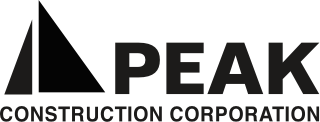In commercial industrial construction, the choice between precast concrete and site-cast tilt-up wall panels is a critical decision.
Tilt-up panels, with their unique characteristics, play an essential role in shaping the success of a project.

BENEFITS
Design Flexibility: Tilt-up panels are known for their design flexibility. They can be made wider than precast panels, minimizing joints and allowing more creativity in aesthetics and structural design, something precast panels may not accommodate quite as well.
Production and Erection Efficiency: Tilt-up panels are produced on-site, making their production timing and efficiency dependent on space and weather conditions. However, this on-site production can be advantageous in long lead-time procurement market conditions, as it allows for faster completion of slab on grade and wall panel work when manufacturing lead times are too far out in the future.
Coordination and Adaptability: Tilt-up panels are typically engineered with traditional reinforcement methods, making them more coordination-friendly. Changes during the design process are usually more easily accommodated with tilt-up panels compared to manufactured precast panels.

Cost and Economic Advantages: Tilt-up panels often have economic advantages, particularly in reduced labor and trucking costs. They also mitigate weather impact risks to the building pad by placing the slab on grade early and cutting the slab to cast wall panels in the process.
PLAN AHEAD
Schedule and Weather Considerations: Tilt-up panels can be advantageous in projects with less concern for adverse weather conditions. They allow for quicker placement of the slab on grade and wall panel erection compared to precast panel projects.
Site Impact and Logistics: Tilt-up panels do require more space on-site, which can significantly impact the ability to perform concurrent sitework and building work. This is particularly crucial as the use of larger panels necessitates larger cranes, and the crane path must be carefully considered. This consideration is essential in conjunction with the completion of other potentially affected site work, as the paths created by these large cranes can influence the overall site layout and logistics.
Despite these challenges, the on-site production of tilt-up panels offers a notable advantage: it can cut months off the duration of projects with long lead times for precast panels. This efficiency gain is especially valuable in fast-paced construction environments where time savings can translate into significant cost reductions and earlier project completion.

Conclusion: When choosing between precast and tilt-up concrete wall panels, it’s crucial to consider these various factors. Tilt-up panels offer significant advantages in terms of design flexibility, cost, and schedule efficiency, making them a compelling option for many industrial construction projects.









